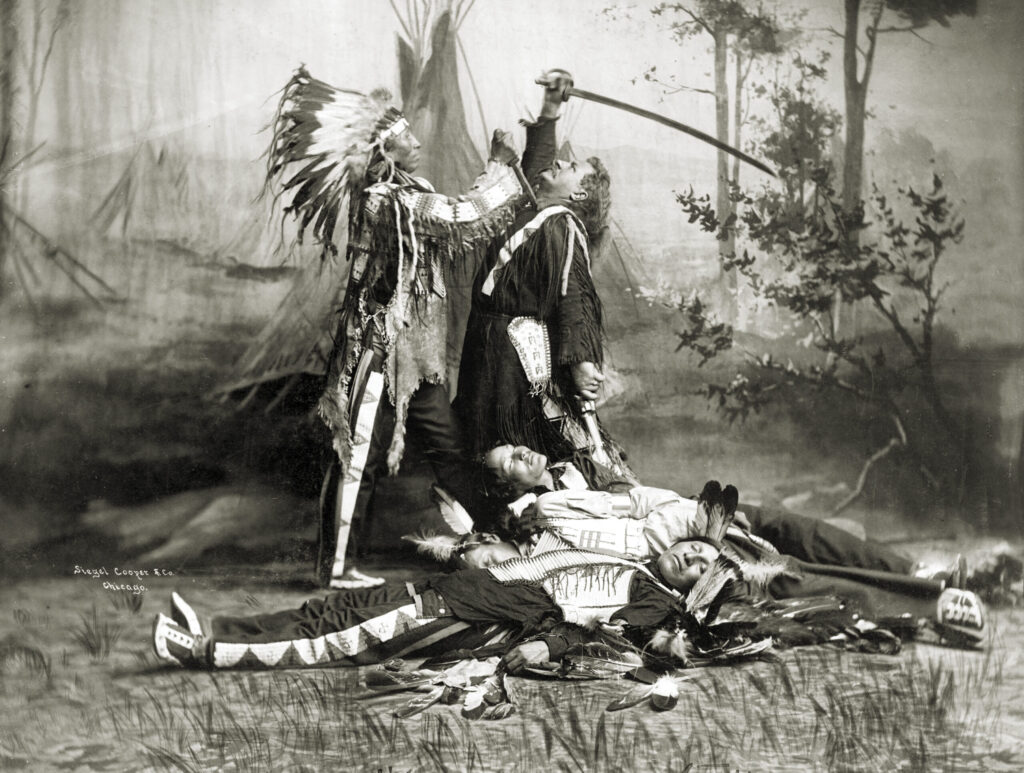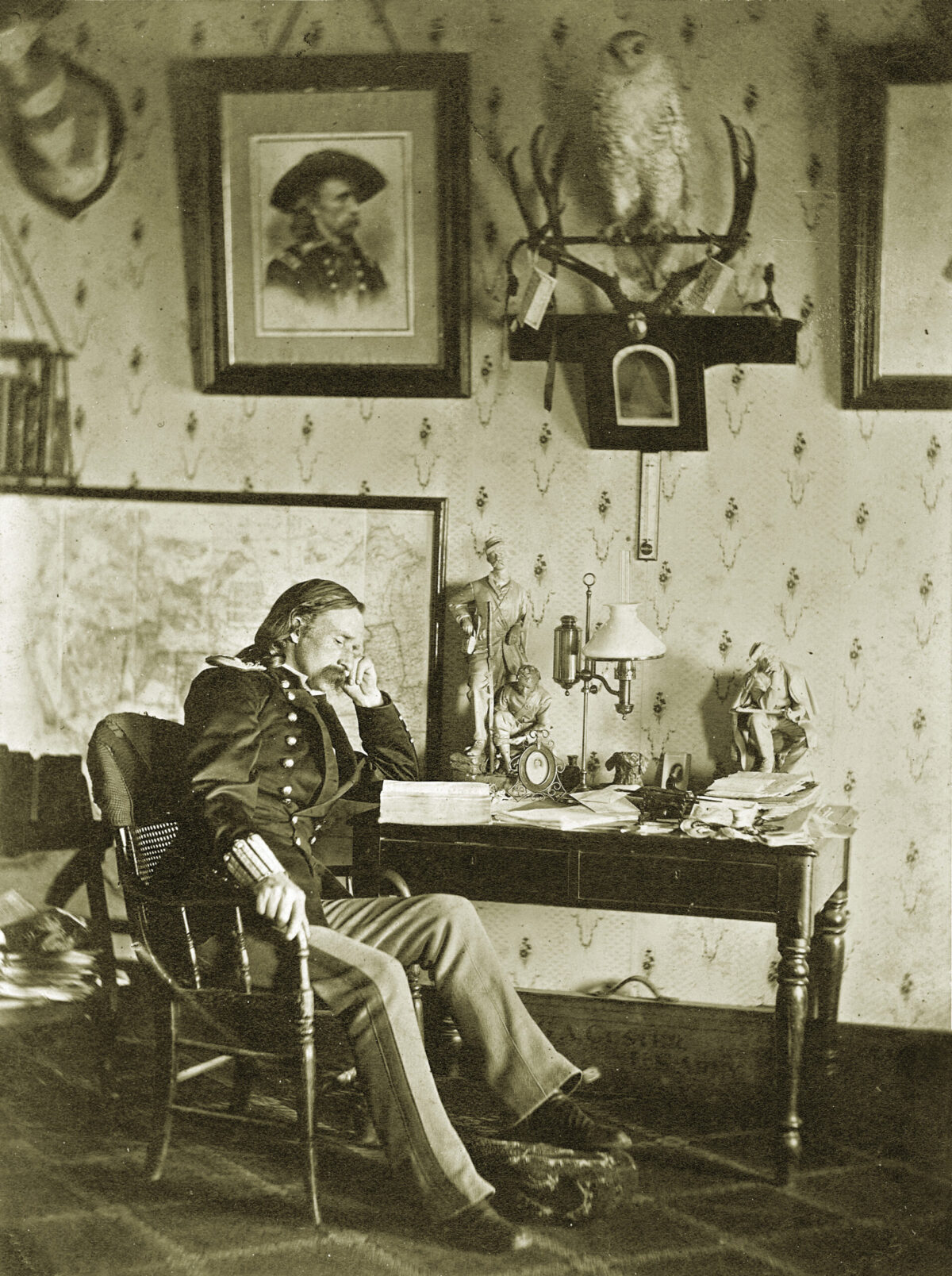When it comes to George A. Custer and the June 25, 1876 Battle of the Little Bighorn, everyone seems to be an “expert”. Even those who may never have read a single book on the battle seem convinced they know exactly why Custer lost the western frontier’s most infamous battle and, in the process, got his regiment needlessly wiped out.
Their narrative usually goes something like this: Foolishly declining a last-minute offer to take rapid-firing Gatling guns with him, Custer’s outsized ego, reckless bravery and overly ambitious quest for glory led to his egregiously bad tactical decisions—including dividing his regiment into four smaller “battalions” in the face of the enemy’s known superior numbers—and prompted him to disobey his commander’s written orders by prematurely launching his regiment a day earlier than planned in a doomed attack. They believe overwhelming numbers of enemy warriors annihilated his regiment to the last man in a brilliantly planned, expertly fought and shrewdly executed trap. Capt. Myles Keogh’s wounded horse, Comanche, they always point out, was the only living thing to survive the massacre.
In short, “everybody knows” that Custer lost because he was a blustering egomaniac with presidential ambitions who was “out-generaled” by the superior tactical skill and battlefield command of Lakota leaders Sitting Bull and Crazy Horse. Those who think they know for certain that’s exactly what happened to Custer at the Little Bighorn battle should heed this sage advice from an eminent historian: “It’s not what we don’t know about history that leads us astray; it’s what we think we know—but isn’t true—that causes the mischief.”
The truth of what really caused Custer’s defeat in the most famous battle between Indians and the U.S. frontier army during the western Indian wars is best revealed by examining Custer’s critical tactical decisions that long, hot, dusty day in June 1876. His decisions must be evaluated within the context of what Custer actually knew at the time he made them—and, importantly, what he did not know.
First, it’s important to quickly dismiss some of the Little Bighorn “red herrings” (on the surface seemingly plausible but misleading distractions). The battle’s most important ones include:
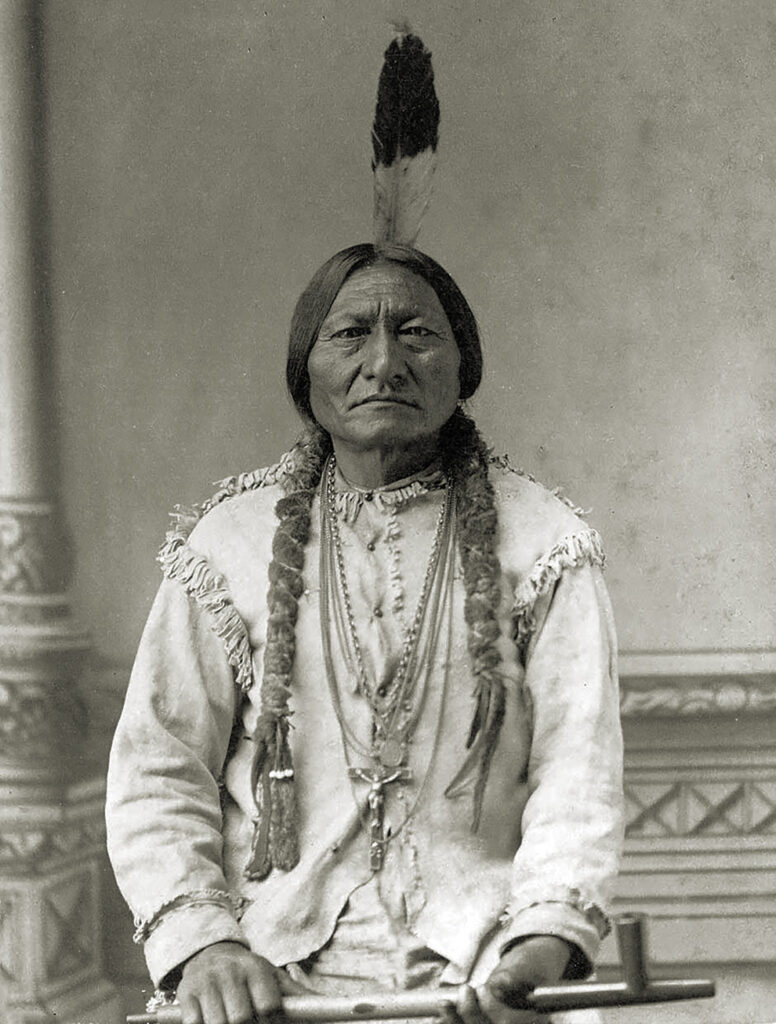
The Myth of “Indian Commanders”
The oft-read claim that “the Lakota and Cheyenne fought under Sitting Bull and Crazy Horse,” implying there was an Indian chain-of-command controlling the warriors’ tactics and maneuvers, exposes egregious ignorance of how Native Americans fought. Indians fought as individuals, fighting if they felt their “medicine” was good, opting out if they judged otherwise. No Indian commanders issued orders and exercised command authority (although some warriors voluntarily followed war-proven successful leaders, like Crazy Horse and Gall, who led purely by example). The best description of how the Lakota and Cheyenne fought Custer at the Little Bighorn is to imagine a hornet’s nest suddenly disturbed—within moments, clouds of angry hornets pour out, swarming and stinging whatever disturbs them, their numbers increasing with each passing minute. Furious that Custer’s attack threatened their families, Lakota and Cheyenne warriors simply swarmed their village’s attackers as they confronted, defeated or annihilated each threat in turn.
Gatling Guns Fantasy
Those who claim rapid-firing Gatling guns could have saved Custer know less about those weapons and their limited capability than they do about Native American warfighting. Three main deficiencies would have prevented these early “machine guns” from having any positive impact on the battle: transportation, targets and crew vulnerability. The guns were mounted on heavy, awkward, large-wheeled artillery piece carriages and pulled by 4-horse teams of “condemned” cavalry mounts (horses deemed unfit for troopers’ mounts but capable of dragging heavy loads). On vehicles susceptible to frequent break-downs, the weapons could not possibly have kept pace with Custer’s regiment’s 30-plus-miles-per-day rapid reconnaissance to fulfill his primary mission: find the Indians’ main camp as quickly as possible and prevent the highly-mobile tribes from scattering into the vast landscape. Trying to drag the clumsy guns over rough terrain and still move fast enough to find the elusive tribes would have been impossible. The guns would have moved slower than Custer’s large pack train of cantankerous, stubborn mules which were so slow that they failed to arrive on the battlefield until after Custer was already dead. Even if the Gatlings had miraculously been present on Last Stand Hill, they needed targets to shoot at—moving around the battlefield on fast, agile Indian ponies, the Indians fought mainly on foot once in range of trooper’s weapons, concealing themselves in every fold, depression and gully the broken terrain offered while firing rifles, muskets and bows and arrows at Custer’s trapped troopers. Unlike the famed 1896 Anheuser-Busch lithograph, Custer’s Last Fight, which graced thousands of saloons across the US, the Indians did not foolishly attack in close-packed masses. Thus the Gatlings would have had no targets to “mow down” with rapid fire. Indeed, the “lack of targets” is supported by the low number of Indian casualties in the battle which may be as few as 31 killed plus a few dozen wounded of an estimated 1,500-2,000 Indians who fought! Finally, Gatling crews had to stand upright to fire the weapon, the crews presenting themselves as vulnerable targets to be quickly shot down by hidden Indian marksmen as the tribesmen closed in on the pinned-down troopers.
Terry’s “Coordinated” Tactical Attack Plan
Those who try to force a modern-warfare template onto the 1876 Great Sioux War campaign typically claim that Brig. Gen. Alfred H. Terry’s three-column advance (Terry-Custer column moving west from Ft. Lincoln in Bismarck, ND; Colonel John Gibbon’s column moving east from Ft. Ellis, MT; and Brig. Gen. George Crook’s column—the campaign’s strongest force—moving northwest from Ft. Fetterman, WY) through central Montana where the main village of “hostile” Lakota and Cheyenne was presumed to be, was intended to be a tactical attack plan for a coordinated military assault on the Indians by all three forces. Yet it’s clear from Terry’s orders to Custer (see “Terry’s Orders to Custer” sidebar) that they are instructions regarding how to find Indians, not a tactical plan on how to fight them once found. It verifies that Terry’s wide 3-column approach was solely intended as a sweep through the vast area to locate the main body of Lakota and Cheyenne and prevent their escape, not a plan of tactical maneuver for a simultaneous, triple-pronged attack. In fact, Terry hoped there would be no fighting and that the Indians—once found, surrounded and prevented from escape—could be peacefully escorted to Dakota reservations. Terry’s hope that Gibbon’s column would arrive north of the Little Bighorn valley on June 26 as Custer arrived from the southeast that day was meant for Gibbon to be a stand-off “blocking force”—not a tactical participant in a coordinated two-pronged assault with Custer’s regiment to attack and destroy the Indians—hemming in the Indians so they could be corralled and escorted to reservations. In the event, the Gibbon column (by then accompanied by Terry) did not even arrive until June 27, further making the “coordinated attack” claim irrelevant. Also Crook’s third column had already turned back, fought to a standstill in the June 17 Battle of the Rosebud by most of the same Indian warriors who—heavily reinforced by hundreds of new arrivals who’d “jumped” their Dakota reservations—defeated Custer on June 25.
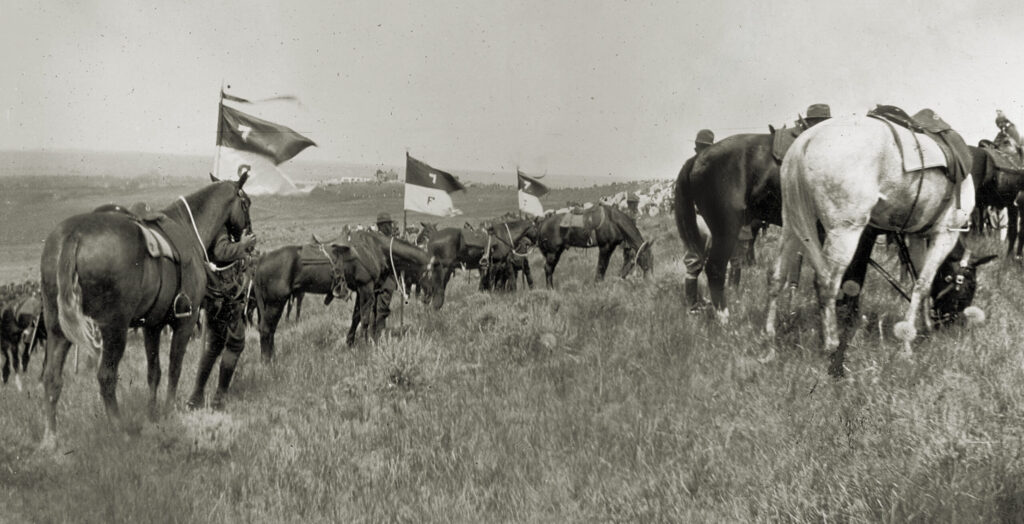
7th Cavalry “Wiped Out”
Although certainly most legitimate Indian Wars historians know better, too many historically ignorant “Custer experts” keep repeating the mistaken claim that Custer’s 7th Cavalry Regiment was “wiped out to a man” in the battle. They mistake the fact that the five companies under Custer’s immediate command (companies C, E, F, I and L), the “battalion” he personally led after reorganizing his regiment into four battalions (see “Custer’s Reorganization for Combat” sidebar) were wiped out (13 officers, 193 troopers and 4 civilians—210 total killed) for his entire 600-strong regiment (31 officers and 566 troopers) being annihilated. Actually, the 7th Cavalry Regiment that day suffered 52-percent casualties: 16 officers and 242 troopers KIA or died of wounds; 1 officer and 51 troopers wounded—horrendous losses, but far from the regiment being “wiped out to a man” in the battle.
Other egregious “red herrings” include the idiotic idea that somehow Custer’s “foolish attack” was because he craved a dramatic victory since he wanted to run for U.S. president—as if any serving officer removed from command because he’d so enraged the Grant administration by his (valid) claims to Congress of the administration’s corruption could ever hope in his wildest dreams to be a valid presidential candidate. Custer not only had to beg for reinstatement to regimental service on the eve of the 1876 Sioux Campaign, but also had to convince his mentor, Maj. Gen. Phil Sheridan, to intercede for him with Grant—a request only granted shortly before the campaign began.
Other improbable “red herring” reasons for the defeat include those Custer-contemporary bigots looking for a convenient scapegoat to excuse the disastrous defeat of the cream of the frontier army by so-called “primitive savages” by egregiously inflating the impact of the cavalry’s M1873 carbine’s weak expended-shell casing extractor that caused weapons to jam. The problem was real, but well-known and documented as affecting only as few as about 1-in-300 carbines. That it was not a major problem during the battle is supported by archaeological evidence from Dr. Doug Scott’s extensive 1991 Little Bighorn battlefield excavations which found very few carbine shell casings that evidenced any tell-tale scratches indicating manual extractions.
When the easily dismissed “red herrings” are wisely ignored, “human error” comes to the fore as the culprit in the 7th’s defeat—the series of command decisions made by Custer himself that determined the 7th Cavalry’s fate. Although he’s pilloried for his decisions based on the battle’s disastrous outcome, an examination of those decisions—assessed within the context of what he actually knew and didn’t know at the time he made them—reveals that most were consistent with what any combat-experienced frontier army officer would have made, and none were irredeemably disastrous…except for the final and ultimately fatal, decision he made at about 3:30 p.m. on June 25, 1876.
Sunday, June 25, 1876, was a long, hot, dusty day full of crucial decisions Custer faced at critical points during his—and half of the troopers in his 7th Cavalry Regiment’s—final day of life. The day began early. Custer had the regiment begin a night march following a wide, recent Indian trail at midnight—but by 5 p.m. that afternoon, Custer, his brothers Capt. Tom and Boston, his nephew Autie Reed, his brother-in-law Lt. James Calhoun (L Company) and half the troopers in the 7th’s 12 cavalry companies were dead on a bleak Montana hillside or soon to die about four miles southeast behind hastily dug entrenchments on Reno Hill. Hindsight is 20-20, but if the critics knew only what Custer knew—and didn’t know—that day, would their judgments be as harsh?
Here’s what Custer actually knew. His primary mission was to find the main Indian village and prevent Indians from escaping and “vanishing” into the vast landscape. Plains Indian warfare experience taught that the most difficult problem for frontier army commanders was finding Indians, not fighting them. At the start of the campaign, each of the three Army columns sent against the Indians in 1876 (Custer’s cavalry regiment, Col. John Gibbon’s column of infantry and cavalry, and Gen. George Crook’s cavalry and mule-mounted infantry) on their own was considered sufficient to defeat any Indian force expected to be encountered. The three widely-separated Army columns were intended to locate the Indians, not combine and fight them in a coordinated battle. Only after the full scope of the disaster was realized did Custer’s commander, Gen. Terry, later create the fiction that Custer and Gibbon were to attack simultaneously on June 26. Moreover, when Terry tumbled to the fact that the army would demand a scapegoat for the worst disaster in the western Indian Wars did he then create the self-serving narrative that “glory-hunting Custer rashly attacked prematurely, disobeying his orders.”
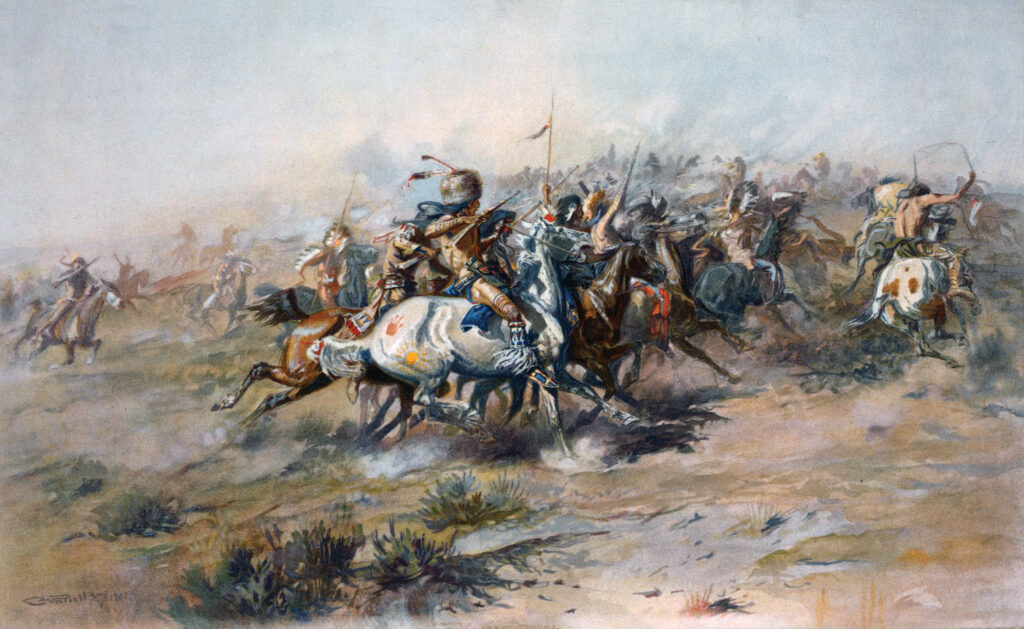
Custer was told he would face, at most, 500 to 800 Indian warriors. The present for duty strength of the 7th that day was about 600 soldiers—31 officers and 566 troopers—plus Indian Scouts, quartermaster employees e.g., mule skinners, and several civilians, including newspaper reporter, Mark Kellogg. Custer had written discretion to move against the Indians as he saw fit. His orders from Terry gave him full latitude in making tactical decisions (see “Terry’s Orders to Custer” sidebar).
Finally, perhaps Custer’s most fatal “knowledge” was that he had successfully attacked a Cheyenne village under Chief Black Kettle on the Washita River (November 1868)—a small part of a much larger combined Indian encampment that may have rivaled in size the June 1876 Little Bighorn village—and he had prevailed against heavy odds by dividing the 7th into several battalions, striking the surprised village from multiple directions and preventing probably overwhelming Indian retaliation during his withdrawal by using captured Cheyenne women and children as hostages.
However, the bloody result of Custer’s command decisions on June 25 was clearly affected by information he did not, or could not, know. Crook’s column, which at over 1,200 Soldiers and hundreds of Crow Indian allies was the most powerful of Terry’s three converging columns, was fought to a standstill by possibly 1,000 warriors at the day-long Battle of the Rosebud, about 30 miles from the Little Bighorn River, the week before on June 17, 1876. Crook retreated without informing the other columns that the Indians were in strength and fighting, not fleeing.
The number of Indian warriors opposing Custer at Little Bighorn was likely between 1,500 to 2,000 (two to three times more than what he had been told). Their ranks were swollen by new arrivals streaming in from Dakota reservations. Indian reservation agents purposely concealed the number of their “missing” Indians since that knowledge reduced their reservation “head count,” prompting drastic cuts in rations and supplies. The Little Bighorn village—probably, at its peak, about 1,000 lodges—was likely the largest-ever concentration of Plains Indians—a unique congregation lasting only a few days since game, grass for the huge pony herd and local resources would force the village to move after those had been exhausted. This historical accident—a congregation of, perhaps 7,000-8,000 Indians (up to 2,000 warriors) in 1,000 lodges (tipis) is the overriding factor leading to Custer’s defeat.
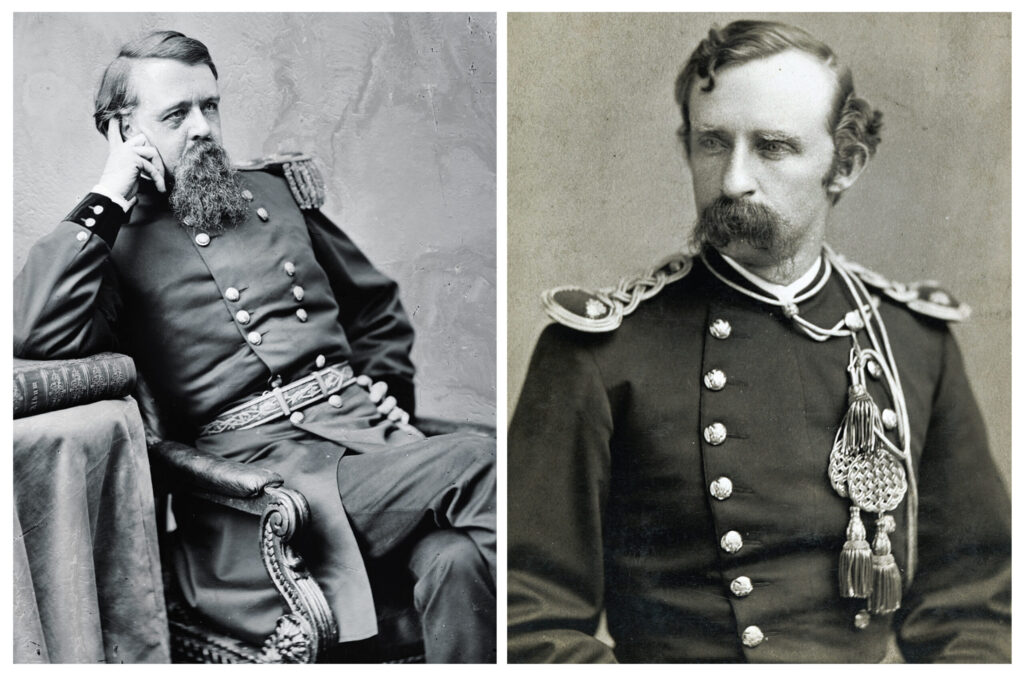
Terry’s Orders to Custer
On the morning of June 22, 1876, during their final meeting before sending Custer and his 7th Cavalry Regiment off on a “reconnaissance in force” mission to locate the main village of Lakota and Cheyenne, Brig. Gen. Alfred Terry, overall campaign commander whose mission was to find the Indians and force them to reservations in Dakota territory, issued written orders to Custer:
The Brigadier General commanding directs that, as soon as your regiment can be made ready for the march, you will proceed up the Rosebud [i.e., travel south in this region where rivers and creeks run north] in pursuit of the Indians whose trail was discovered by Major Reno [Custer’s second-in-command] a few days since. It is, of course, impossible to give you any definite instructions in regard to this movement, and were it not impossible to do so the Department Commander places too much confidence in your zeal, energy, and ability to wish to impose on you precise orders which might hamper your action when nearly in contact with the enemy.[emphasis added] He will, however, indicate to you his own views of what your action should be, and he desires that you should conform to them unless you shall see sufficient reasons for departing from them. He thinks that you should proceed up [south] the Rosebud until you ascertain definitely the direction in which the trail above spoken of leads. Should it be found (as it appears almost certain that it will be found) to then turn toward the Little Horn, he thinks that you should still proceed southward, perhaps as far as the headwater of the Tongue, and then turn toward the Little Horn, feeling constantly, however, for your left, so as to preclude the possibility of the escape of the Indians to the south or southeast by passing your left flank. The column of Colonel Gibbon is now in motion for the mouth of the Big Horn. As soon as it reaches that point it will cross the Yellowstone and move up at least as far as the forks of the Big and Little Horns. Of course, its future movements must be controlled by circumstances as they arise, but it is hoped that the Indians, if upon the Little Horn, may be so nearly inclosed by the two columns that their escape will be impossible.
The Department Commander desires that on your way up the Rosebud you should thoroughly examine the upper part of the Tullock’s creek, and that you should endeavor to send a scout through to Colonel Gibbon’s column, with information of the results of your examination. The lower part of this creek will be examined by a detachment from Colonel Gibbon’s command. The supply steamer [Far West under captain Grant Marsh] will be pushed up the Big Horn as far as the forks of the river if found to be navigable for that distance, and the Department Commander, who will accompany the column of Colonel Gibbon, desires you to report to him there not later than the expiration of the time for which your troops are rationed, unless in the meantime you receive further orders.
Custer’s Reorganization for Combat
After he was informed that the 7th had been seen by several small Indian parties and therefore assuming the main Indian camp would be warned, Custer abandoned his plan to hide the regiment all that day for a June 26 attack and instead move immediately against the Indian village before it could flee. Therefore, about noon on June 25, at the base of the “Crow’s Nest” peak in the Wolf Mountains from which the 7th’s Indian scouts had seen the main Lakota-Cheyenne village on the Little Bighorn 15 miles away, Custer reorganized the regiment for combat by dividing it into four battalions plus 35 Indian Scouts.
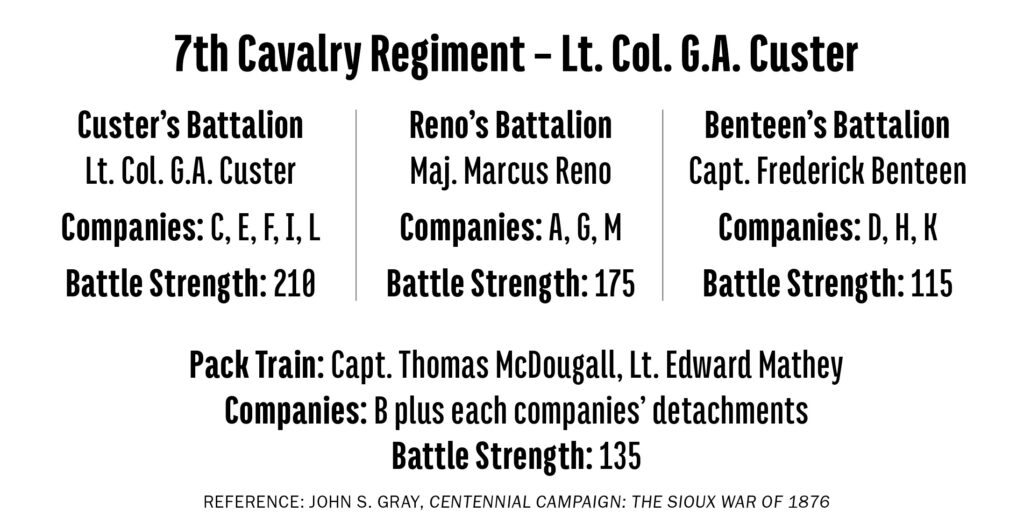
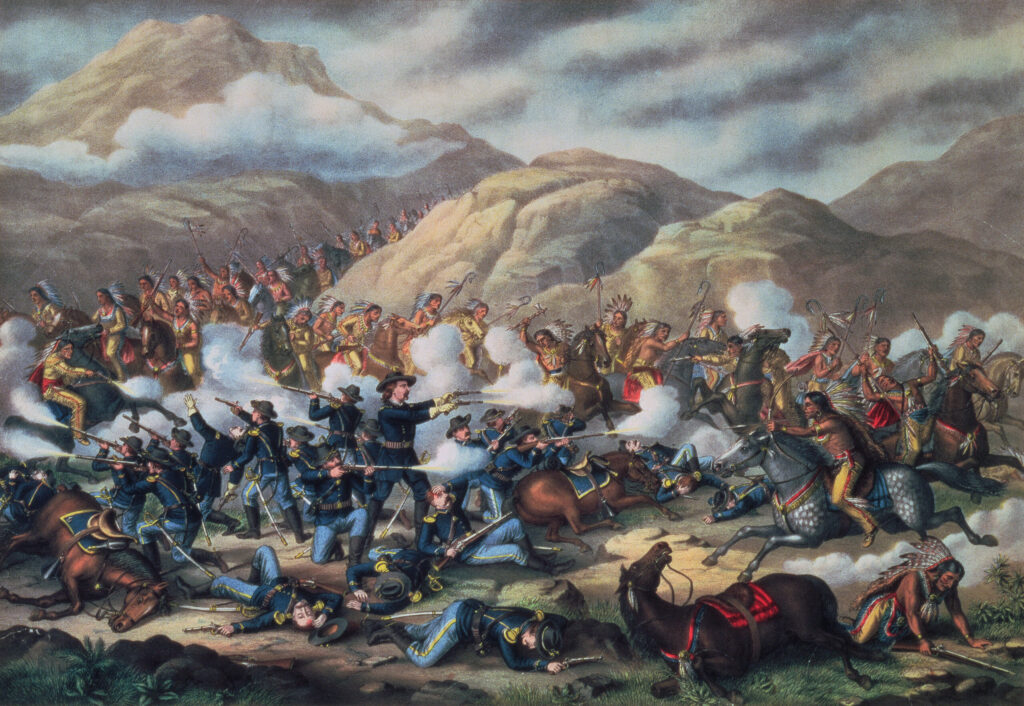
Custer’s Decisions
re: John Gray’s Centennial Campaign calculated timeline
9:00 p.m., June 24, final bivouac (near today’s Busby, Mont.)
Scouts report finding a fresh Indian trail, making it all but certain the main village is in the Little Bighorn valley.
Custer decision
Launch the 7th along that trail just past midnight, June 25.
Assessment
The decision is totally consistent with Custer’s primary mission to find the hostile Indians’ village as quickly as possible.
9:00 a.m., June 25, Crow’s Nest vantage point (15 miles from Little Bighorn village)
Accepting his scouts’ word that they can see the village’s huge pony herd (although neither he nor his chief of scouts, Lt. Charles Varnum, could make it out), Custer now knows the camp’s location.
Custer decision
Hide the regiment all day in the Wolf Mountains, concealed by the rough terrain, then move at night to strike at dawn, June 26 (the day he was told by Terry that Gibbon’s column should reach a blocking position north of the Indian village).
Assessment
Hiding the regiment for a dawn surprise attack on the unsuspecting village the next morning was prudent, consistent with Terry’s orders and confirming Custer’s plan conceived the night before. (Gibbon’s blocking force was intended to intercept fleeing Indians after Custer’s attack, not to participate in the 7th’s assault as an element in a coordinated attack as often erroneously assumed and as Terry falsely claimed afterwards—revealingly, when Terry wrote his orders, he of course had no idea Custer would decide to attack the village on June 25. Terry wanted the Indians found and kept from escaping.)
10:30 a.m., base of the Crow’s Nest
Custer learns that three separate small Indian groups had recently spotted elements of the regiment.
Custer decision
Do not risk waiting, make an immediate attack on the village before it can be alerted and escape the approaching army columns.
Assessment
Since experience taught that Indians invariably scattered and disappeared into the landscape if warned of an enemy’s approach, any experienced frontier army officer likely would have made this same decision. Custer could not have known that the Indians that spotted him were on their way to other distant locations and therefore none had alerted the village.
12:00 p.m., one mile north of Crow’s Nest
The approach to the village prompts reorganizing the 7th regiment’s companies for combat.
Custer decision
Divide the regiment into 4 battalions (see “Custer’s Reorganization for Combat” sidebar).
Assessment
Sub-dividing a cavalry regiment into battalion-sized maneuver elements was a common Plains warfare army tactic. Custer successfully fought this way at the Washita (1868) and Crook used similar tactics at the Rosebud (June 17). Notably, Col. Ranald MacKenzie, who usually fought his regiment as a single unit, used such “battalion” tactics in his most famous victory—Palo Duro Canyon, Texas vs. Comanches and Kiowas (1874), where MacKenzie’s stunning victory ended Comanche power forever and forced the tribes onto reservations.
2:30 p.m., 4 miles east of Little Bighorn River
While Capt. Frederick Benteen’s battalion continues to scout for any Indians who might be south of the Little Bighorn valley, Custer’s and Maj. Marcus Reno’s battalions surprise a few Indians who immediately flee in panic toward the still-unseen main village. Scout/interpreter Fred Gerard shouts to Custer, “Here are your Indians! Running like devils!”
Custer decision
Assuming these Indians certainly will alert the village, Custer immediately launches Reno’s 3-company battalion to directly attack it from the south while flanking the village by leading his own 5-company battalion to the high bluffs towering over the east bank of the river. Via messenger, Custer orders Benteen’s 3-company battalion to quickly rejoin the command.
Assessment
Taking immediate action now that the village is certain to be warned likely would have been any frontier army commander’s decision. Still unaware of the village’s unprecedented size, attacking it unexpectedly from two directions (while summoning reinforcements—Benteen’s battalion) seemed tactically-feasible given what Custer—who had not yet seen the huge size of the village—then knew regarding Indian numbers.
3:30 p.m., atop bluffs east of the river
Seeing Reno’s attack begin to bog down and becoming hotly engaged by warriors in the valley and with Benteen’s battalion still missing, Custer faces his most crucial decision—ride directly to Reno’s aid—which likely would have ended with Custer, Reno and eventually Benteen and the Pack Train, in effect the entire regiment, besieged on Reno Hill—wait for Benteen, or continue his attack from another direction.
Custer decision
Maneuver against the village from another, unexpected direction by leading his battalion farther north where the Indian women and children were fleeing, with the possibility of—like at the Washita battle—capturing them as hostages to dissuade Indian attacks.
Assessment
None of Custer’s command decisions—up to this point—had put the 7th on an irreversible course to disaster. Options that would have led to his gathering the entire regiment on defensible high ground still remained possible. However, his decision at about 3:30 p.m. to continue north finally sealed his and his regiment’s fate. Recent scholarship suggests Custer had still not seen the huge size of the entire village when he made this decision (he had likely viewed the valley from further east—probably Sharpshooter Ridge—and not from the better (higher) vantage point known as Weir Point). Lacking this vital intelligence, still thinking the opposing Indian force was only one-half to one-third its actual size and denied critical knowledge about the Indians not fleeing but standing and fighting from Crook’s Rosebud battle, Custer made his last—fatal—decision.
